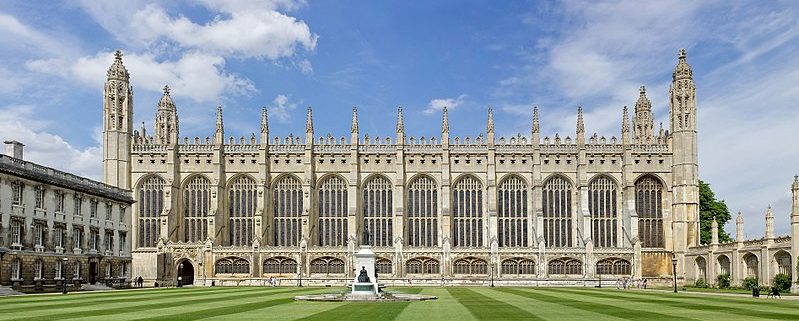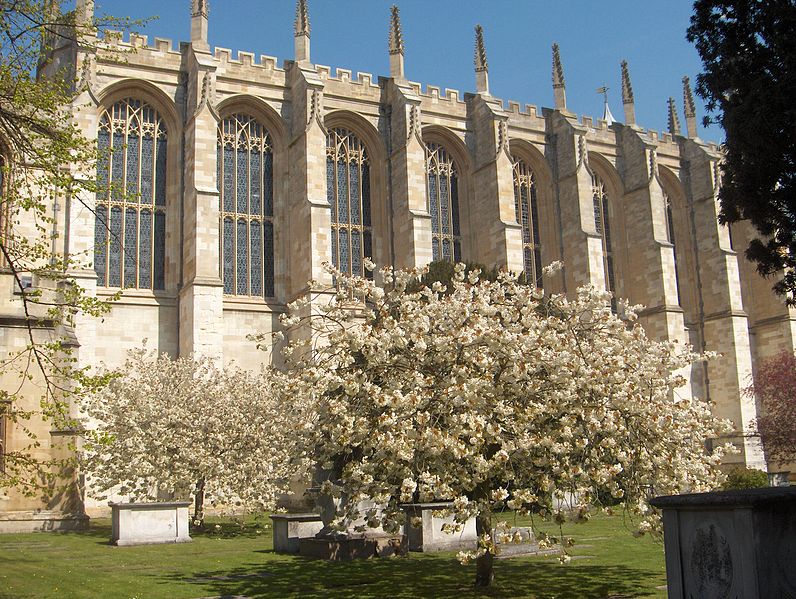550 Years Ago England’s Worst King Murdered In The Tower
On 21 May 1471 the last of the Lancastrian kings, Henry VI, was murdered in the Tower of London. If Henry were not the worst, he must have been the unluckiest of English kings. On his watch England lost the Hundred Years’ War with France and was convulsed in the Wars of the Roses. Henry lost two crowns, one of them twice.
He was the only son of Henry V, victor at Agincourt in 1415. The charismatic father embodied the virtues of the medieval warrior-king. The insipid son was the only king of medieval England who did not lead an army in war against a foreign enemy, and showed no interest in martial pursuits. This cut no ice with the English nobility, who ran private armies and practised for war when they were not actually waging it.
Henry was born at Windsor 600 years ago, on 06 December 1421. He was only nine months old when his father died of dysentery campaigning in France. The quarrelsome nobles of the Royal Council sank their differences and governed on the boy’s behalf, maintaining stability in England, where he was crowned king in 1429, and retaining most of the English territory in France, where he was crowned king in 1431. The problems started in 1436 when Henry began to exercise power in his own right.
Medieval kings were besieged by petitioners. With ‘benevolent vagueness’ (Helen Castor) Henry never seems to have refused a request. This led to the wholesale granting of titles, lands, offices, rents, and pardons which completely undermined the royal finances. While some of this was cronyism, Henry seems to have been naïve, impractical and excessively generous. As James Ross writes: ‘Carelessness, lack of attention to detail and sheer incompetence were the hallmarks of the king’s involvement in government’. He would perhaps have been better suited to the religious life, as medieval apologists suggested.
Some of his achievements in education were not recognised at the time, and are not generally associated with his name now. In 1440 he set up Eton College as a charity school for 70 poor boys who would then go on to King’s College, Cambridge, founded in 1441. Henry intended the nave of Eton College Chapel to be the longest in Europe, with 17 or 18 bays; even at today’s eight, it is impressive. He laid the foundation stone of King’s College Chapel in 1446, though the building was not completed for another century. In 1442 Henry lobbied the Pope unsuccessfully to have King Alfred, whom he admired as an educational reformer, canonised as a saint, and in 1445 he provided 30 oak trees from the royal forests for a new library at Salisbury Cathedral. The building stone came courtesy of the Abbess of Shaftesbury from quarries at Chilmark.
While these worthy foundations were viewed by many contemporaries as expensive vanity projects, Henry’s failure to defend English territory in France attracted far more venom. In 1445 Maine was ceded to Rene of Anjou, Henry’s new father-in-law, without consultation or compensation of English stake-holders. This contributed massively to the loss of Normandy in 1450 and Jack Cade’s Rebellion in Kent; in 1453 Gascony, which had been English for four centuries, was re-taken by the French.
News of the disastrous English defeat at Castillon in the summer of 1453 probably helped to trigger Henry’s sudden and total mental collapse while at Clarendon, a royal hunting lodge near Salisbury. Henry was in a catatonic state, unable to respond or even move, until Christmas 1454. Even after his apparent recovery – for which Henry ordered thanks be given to St Edward (probably “the Confessor”, though Henry would have been familiar with Shaftesbury Abbey’s St Edward “the Martyr”) – the king was now little more than a puppet. His French queen Margaret of Anjou did her best to defend the interests of her husband and their son, born during Henry’s mental paralysis, (and also called Edward). Misogyny and francophobia meant that she would never be acceptable as a regent, and the struggle for power between Margaret’s Lancastrian supporters and their Yorkist rivals was finally resolved in favour of the Yorkist Edward IV after one of the bloodiest battles on English soil at Towton, fought in a snowstorm in March 1461. Henry evaded capture until 1465 while his wife and son made their way to France.
In 1470 a split in the Yorkist ranks saw Henry released from the Tower and restored as king. “A stuffed woolsack lifted by his ears, a shadow on the wall, bandied about as in a game of blind-man’s buff, submissive and mute … like a crowned calf” according to a Burgundian chronicler. Margaret returned from France via Weymouth with Prince Edward, only to be captured on 04 May 1471 at the Battle of Tewkesbury where her son was killed. There was now no incentive for Edward IV to keep Henry alive. Previously his murder would have created a martyr, with a much more capable heir to replace him.
In death Henry became the subject of a cult. Pilgrimages were made to his Windsor burial place and 368 miracles were claimed on his behalf. Putting on his red velvet hat, kept by his tomb, was a sure-fire cure for migraines. The Tudor kings Henry VII and Henry VIII had a vested interest in playing up the saintliness of their otherwise feckless kinsman. The consolation of canonisation was, however, denied Henry VI by the break with Rome in the 1530s, when Thomas Cromwell would have confiscated the hat.





